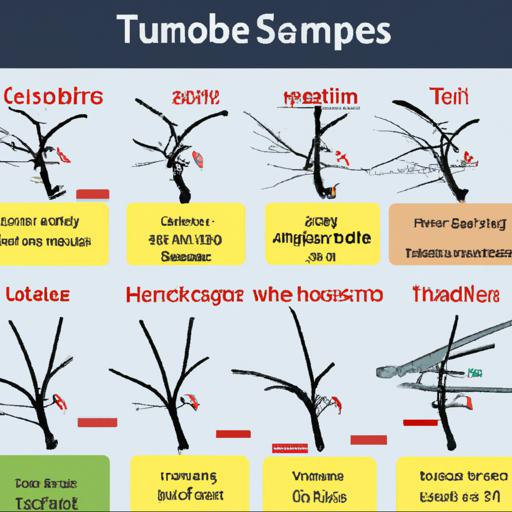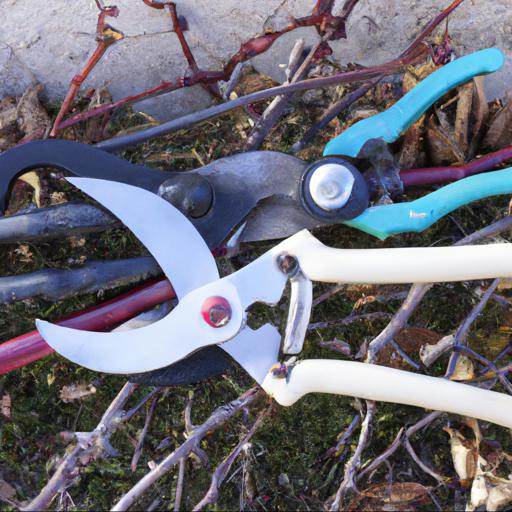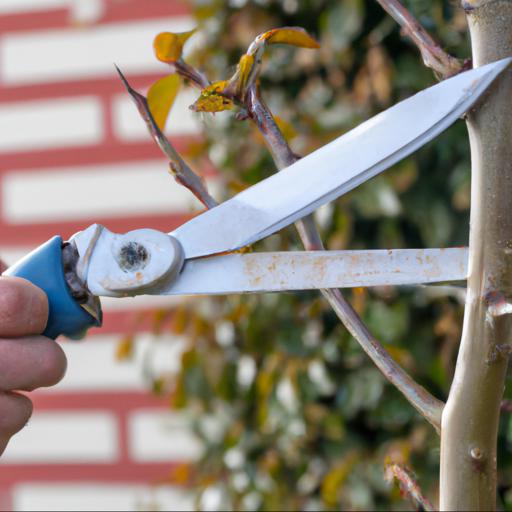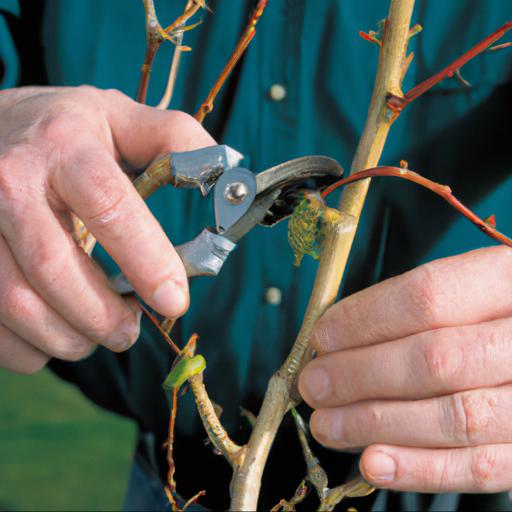Are you looking for tips to help you become a better pruner? Pruning is an important part of gardening and landscaping, but it can be difficult to master. Whether you’re a beginner or an experienced gardener, the right pruning techniques can make all the difference in the health and beauty of your plants.
In this blog, we will provide you with some essential tips for better pruning that will help you achieve the desired results. From choosing the right tools to understanding the best pruning methods, you’ll learn how to prune effectively and keep your plants healthy.
Types of pruning and when to use them

. “Pruning is an important part of maintaining healthy plants and trees, but it can be difficult to know when to prune and how to do it correctly.
As a UK gardening expert I am here to provide some tips on when and how to prune for the best results. Different types of pruning are used for different purposes. For example, thinning cuts remove excess foliage and creates greater air circulation, which can be beneficial for some plants and trees.
Topping and topping-out pruning involves cutting off top branches which can encourage more vertical growth in some species. Crown cleaning involves pruning away any dead, diseased, crossed or weak branches for the overall health of the plant.
When it comes to when to prune it is best to do it in the cooler months between late autumn and early spring. This is because this is when most plants are dormant and there is less risk of shock or disease. Plus it is less likely to weaken the plant or leave it vulnerable due to its reduced growth ability in cold months.
Being aware of the different pruning tasks and when to do it can help your garden thrive and boast better health and growth. Pruning helps your garden look and feel fresher but can also be essential for the health of all your plants. “
Tools and techniques for pruning

Pruning is an essential gardening task for many of us, and proper pruning requires some skill and expertise. As a UK garden expert, I’d like to share my tips and techniques for better pruning. To achieve a tidy, attractive garden, pruning should become a regular habit.
The goal of pruning is to balance the desirable aesthetic effect with the needs of the plant. To achieve the desired outcome, it is important to prune at the right time and choose the right pruning method.
Late winter through early spring is typically the ideal time for pruning shrubs and trees. You may also need to consider the type of plant in question as some require more specific pruning techniques – for example, roses need to be pruned annually whereas fruit trees are usually pruned every two or three years.
When it comes to the actual pruning process, it is important to use the three-cut method. This involves cutting the stem in two separate places — the first cut should be about one-third of the way through the stem, followed by a second cut which should be close to the first one, but should sever the stem completely. This prevents the bark from peeling and tearing back.
Secondly, use sharp, clean pruning tools to make sure that cuts are clean and neat. Dull pruning tools can easily crush the stems, which can lead to disease. Lastly, when pruning, make sure to remove any dead or diseased plant parts.
Disposing of the cuttings properly is also always a good idea, to avoid the risk of disease spreading to neighbouring plants. In conclusion, proper pruning is an important skill required to keep your garden looking its best.
Using the right equipment, the right timing and the right techniques, you can make sure that your plants get the care they deserve.
Tips for pruning trees and shrubs

With proper pruning, trees and shrubs can flourish in any landscape. Pruning keeps these plants healthy, encourages fresh growth, and helps to shape them into desired forms.
But it takes a bit of know-how to ensure that these plants maintain their health and natural beauty. Following are some tips for better pruning of trees and shrubs in your yard. Firstly, it is very important to prune according to the season, otherwise you are likely to damage the tree or shrub.
Pruning in the summer months is generally not recommended as it can cause the plant undue stress, but late winter and early spring is an acceptable time to prune. Remove only healthy branches that are no longer necessary, such as those that are dead, broken, or crossing other branches.
Remember to prune in moderation, removing only one-third of the overgrown branches, as too much pruning can leave a tree or shrub overly exposed and vulnerable. Always use sharp tools and make sure they are clean and properly sharpened before you start pruning. This will make clean cuts that don’t inflict unnecessary damage to the trees and shrubs.
Also, when making multiple cuts, make sure to terminate your pruning at the point of origin. This prevents the tree or shrub from sustaining too much damage and helps maintain its overall health.
Pruning isn’t just about removing branches. Shaping is also important. To outline a particular shape for your tree or shrub, pay attention to the natural form of the plant, and use subtle guidance to get it to take the desired shape.
Additionally, if you are working with coniferous trees and shrubs, cutting away the tips of branches will promote healthy and challenging growth, and will also help the shrub look balanced and beautiful. These basic tips for better pruning of trees and shrubs are important for maintaining the health and beauty of your landscape. Following an appropriate pruning plan will help your garden look its best, while providing your plants with the nourishment they need to properly grow and thrive.
Common pruning mistakes to avoid
Pruning is an important part of maintaining a healthy and beautiful garden, but there are a few common pruning mistakes that uk garden experts tell us to avoid. From over-pruning to incorrect pruning techniques, there are a few handy tips to keep in mind for better pruning. It’s natural to look after our plants by lopping off some of their branches, but over-pruning can be disastrous.
Not only can it shock a plant, it can also leave it with unattractive bare patches or make it grow stunted. Knowing when to prune, and how much can be tricky, but knowing what type of plants you have is the best starting point.
It’s also important to prune at the right time in the growing season to ensure that the plant isn’t weakened by the process. Tools are also a big part of pruning, and it’s always important to make sure that they’re kept in good condition. Blunt or rusty pruners can cause damage to the plant, so it’s essential to sharpen them regularly and to sanitize the blades with rubbing alcohol or a bleach solution between pruning different plants.
This helps to avoid transferring any diseases from one plant to another. Finally, pruning in the wrong places can have disastrous results.
Pruning on the wrong side of a shoot can cause the plant to grow out of balance and will prevent it from growing in a healthy, attractive shape. To avoid this, uk garden experts recommend pruning from the outside of the shape and allowing the center to stay fuller. With these simple tips, pruning will soon become an enjoyable part of your landscaping routine.
Final Touch
Pruning is an important part of gardening and landscaping that can help maintain healthy plants and promote growth. To achieve the best results, it is important to prune at the right time and in the right way.
Tips for better pruning include: cutting off dead and diseased branches, removing any crossing or rubbing branches, thinning out overcrowded areas, and cutting back long branches to encourage new growth. Following these tips can help keep your plants healthy and looking their best.
FAQ
What are the best tools for pruning?
The best tools for pruning include pruning shears, loppers, pruning saws, and hedge shears.
What are the most important pruning techniques?
The most important pruning techniques are thinning, heading, and shearing. Thinning involves removing entire branches to reduce density and improve air circulation. Heading involves cutting back branches to a lateral bud or branch to reduce length and encourage branching. Shearing involves trimming branches and foliage to maintain a desired shape.
How often should I prune my plants?
It depends on the type of plant, but generally pruning should be done once or twice a year.
What are the benefits of pruning?
The benefits of pruning include improved plant health, increased flowering and fruiting, improved air circulation, and increased light penetration. Pruning also helps to control plant size and shape, and can help to reduce the spread of disease.
What are the risks of improper pruning?
The risks of improper pruning include damaging the tree or shrub, encouraging disease, and stunting growth. Improper pruning can also lead to an unbalanced or unnatural shape, which can be unsightly and difficult to correct.
What are the signs that a plant needs pruning?
The signs that a plant needs pruning include: overgrown branches, dead or diseased branches, branches that are crossing or rubbing against each other, and branches that are growing in an undesirable direction.

